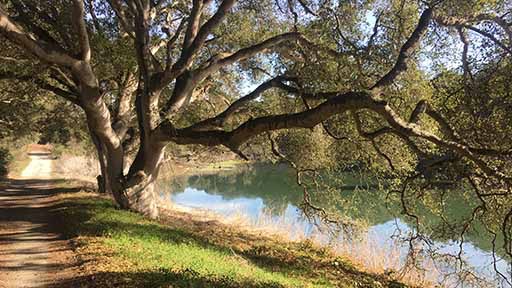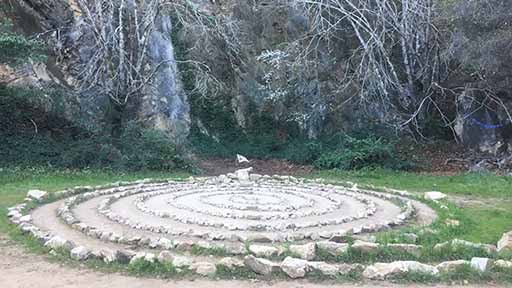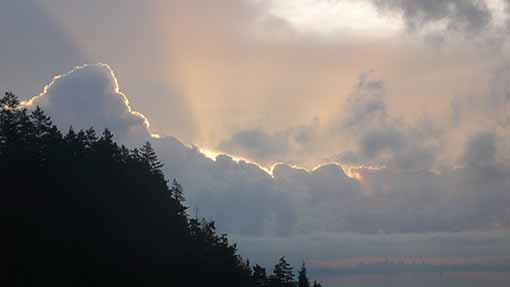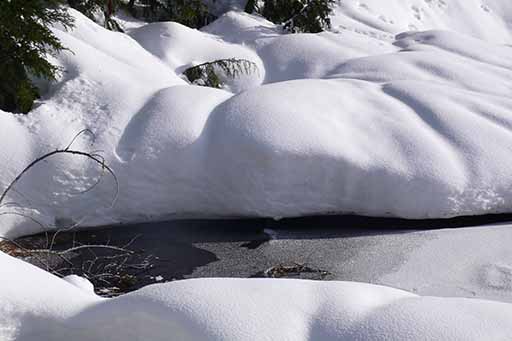Something to keep in mind…
Nothing short of a
complete economic
…
and social realignment
…
will save our planet
.

CLIMATE BREAKDOWN ACCELERATES
Permafrost Thawing
The release of methane is not currently represented in most of the models that are used for the IPCC projections. But the recent study on permafrost warming in Nature Communications provides clear data on global permafrost degradation.
Permafrost is soil that remains frozen for two or more consecutive years. It is usually composed of rock, soil, sediments, and varying amounts of ice that bind the elements together. Permafrost represents one of the largest natural reservoirs of organic carbon in the world.
When permafrost thaws, frozen organic matter thaws as well, and as it begins to decay soil microorganisms can eat the organic matter. If there is oxygen present the microbes release CO2. If there is no oxygen available they release methane.
Methane is a strong greenhouse gas, 21 to 25 times as strong as carbon dioxide over a 100 year period. But during the first 20 years after release, methane is 86 times the strength of CO2.
This video is from 2012 but the information is still relevant…
Dr. Charles Miller, NASA Jet Propulsion Labratory
[VIDEO]
The Nature Communications study on permafrost is significant because it is the “first globally consistent assessment of permafrost temperature change”.
Unexpected Boost of Methane, Permafrost is Warming at a Global Scale
Climate State 1-21-19
This video by Climate State is a compilation of a great number of studies, most importantly, the permafrost study in Nature Communications. Do follow the many links at Climate State to other studies on the warming permafrost.
[VIDEO]
The Nature Communicaitons’ study on permafrost Permafrost is warming at a global scale
Nature Communications 1-16-19
17% of the Earth’s exposed land surface is underlain by permafrost, that is ground with a temperature remaining at or below 0 °C for at least two consecutive years. The thermal state of permafrost is sensitive to changing climatic conditions and in particular to rising air temperatures … Carbon release resulting from permafrost degradation will potentially impact the Earth’s climate system because large amounts of carbon previously locked in frozen organic matter will decompose into carbon dioxide and methane. … permafrost change is not yet adequately represented in most of the Earth System Models that are used for the IPCC projections for decision makers.
Both the video and the CS site reference this article…
Inside Climate News 1-16-19
Most permafrost areas have been frozen since the last ice age, about 10,000 years ago. They trap vast amounts of carbon in layers of frozen organic soil up to a mile thick.
By some estimates, the Arctic permafrost contains enough carbon to nearly double the amount of CO2 currently in the Earth’s atmosphere.
… scientists found a huge seasonal surge in greenhouse gas emissions in Alaska during autumn months linked with warming temperatures. Emissions from the October-December period had increased by 73 percent since 1975, and that increase correlated with rising summer temperatures in the region.
The data for the study was gathered by…
The Global Terrestrial Network for Permafrost
[GTN] is the primary international programme concerned with monitoring permafrost parameters. GTN‐P was developed in the 1990s … with the longterm goal of obtaining a comprehensive view of the spatial structure, trends and variability of changes in the active layer thickness and permafrost temperature.
This microbe survey could tell us just how dangerous permafrost thaw is — and how to fight it
Arctic Today 7-20-18
Permafrost underlies an estimated 20 percent of the Earth’s surface, and, if it all thawed, it could potentially release as much as a gigaton of methane, or the equivalent of 20 gigatons of carbon dioxide — more if measured according to its short-term impact.
… Microbes — which are afforded improved living conditions in the warmer, wetter climate now being seen in the Arctic — are known to drive force the release of methane in thawed permafrost by breaking down the once-frozen organic matter.
Early spring rain boosts methane from thawing permafrost by 30 percent
UW News 2-4-19
[VIDEO]
[The UW] team has found a new reason behind increased methane emissions from a thawing permafrost bog in Alaska: Early spring rainfall warms up the bog and promotes the growth of plants and methane-producing microbes.
Methane, explained
National Geographic 1-23-19
methane is a potent greenhouse gas—about 28 times more powerful than carbon dioxide at warming the Earth, on a 100-year timescale, and more than 80 times more powerful over 20 years.
… Most of methane’s natural emissions come from a soggy source: wetlands, which includes bogs.
… Methane may also have been the cause of rapid warming events deep in Earth’s history, millions of years ago. Under high pressure, like the pressures found deep at the bottom of the ocean, methane solidifies into a slush-like material called methane hydrate.
… In the modern atmosphere, methane concentrations have risen by more than 150 percent since 1750.
Melting ice sheets release tons of methane into the atmosphere, study finds
Technology 1-8-19
As reported in Nature, using novel sensors to measure methane in meltwater runoff in real time, they observed that methane was continuously exported from beneath the ice. They calculated that at least six tons of methane was transported to their measuring site from this portion of the Ice Sheet alone, roughly the equivalent of the methane released by up to 100 cows.

HOT AIR NEWS ROUNDUP
A great article about Antarctica’s most endangered glacier! If you read nothing else, read this one…
Huge cavity in Antarctic glacier signals rapid decay
Science Daily 1-1-19
A gigantic cavity — two-thirds the area of Manhattan and almost 1,000 feet (300 meters) tall — growing at the bottom of Thwaites Glacier in West Antarctica is one of several disturbing discoveries reported in a new study of the disintegrating glacier.
… “[The size of] a cavity under a glacier plays an important role in melting,” said the study’s lead author, Pietro Milillo of JPL. “As more heat and water get under the glacier, it melts faster.”
The huge ‘hole’ in the Antarctic glacier is all over the mainstream news. Here’s another article…
There’s a Big Hole in the World’s Most Important Glacier. Yes, It’s a Problem.
Mother Jones 1-5-19
The hollowed-out section is two-thirds the size of Manhattan and 1,000 feet tall—big enough to have contained 14 billion tons of ice, according to a new study in the journal Science Advances. The NASA scientists who discovered it think most of the hole formed in just the past three years.
Earth’s Long-Term Warming Trend
[VIDEO]
Australia’s extreme heat is sign of things to come, scientists warn
The Guardian 2-1-19
A persistent high-pressure system in the Tasman Sea that blocked cold fronts and cooler air from reaching the country’s south, and a delayed monsoon in the north, contributed to the heatwave.
Climate change is the long-term driver. “The warming trend which has seen Australian temperatures increase by more than 1C in the last 100 years also contributed to the unusually warm conditions,”
‘Climate Crisis’ Will Claim One-Third of Himalayan Glaciers by 2100
Motherboard 2-4-19
36 percent of region’s glaciers will melt by 2100 even if warming is kept to 1.5 degrees Celsius above pre-industrial levels.
Another article on the same thing…
Rising Temperatures Could Melt Most Himalayan Glaciers by 2100
NYT 1-4-19
One of the most complete studies on mountain warming, the Hindu Kush Himalaya Assessment was put together over five years by 210 authors. The report includes input from more than 350 researchers and policymakers from 22 countries.
… A few years ago, all 18 families in Samjong moved to a village around 1,000 feet lower after their crops repeatedly failed.
Climate Change, Frigid Temperatures and the Polar Vortex: 3 Things to Know
World Resources Institute 1-30-19
1) Despite current cold snaps, global temperatures have been steadily rising.
2) A growing body of research links rising Arctic temperatures with extreme winters
3) Our understanding of the connection between a warming Arctic and extreme weather is still evolving.
Less Extreme Cold
Climate Central 12-30-19
In the last half-century, 96 percent of our 244 locations have recorded a rise of at least 1°F in their yearly coldest temperature, while only 2 percent have seen a decrease of at least 1°F. The average trend across these cities is a 6°F rise, and 33 cities in 20 states have recorded an increase of 10°F or more.
Human carbon emissions to rise in 2019
Climate News Network 1-31-19
British meteorologists warn that although 2018 broke all records for greenhouse gas emissions, 2019 will see even more carbon dioxide take up long-term residence in the planetary atmosphere.
And it will happen for two reasons, both of them nominally at least under human control.
U.S. Intelligence Officials Warn Climate Change Is a Worldwide Threat
Inside Climate News 1-30-19
Their annual assessment says climate hazards such as extreme weather, droughts, floods, wildfires and sea level rise threaten infrastructure, health and security.
A very well written and interesting article…
A kingdom from Dust
California Sunday Magazine 1-31-18
I’m going to Kern County, just shy of the mountains, to figure out how the biggest farmers in America, led by the biggest of them all, are not only keeping alive their orchards and vineyards during drought but adding more almonds (79,000 acres), more pistachios (73,000 acres), more grapes (35,000 acres), and more mandarins (13,000 acres).

PROTESTS • EXTINCTION REBELLION • RESISTANCE
Fridays For Future
Belgium climate protests: Children skip school to demonstrate
BBC 1-31-19
For a fourth week, tens of thousands of children have skipped school in Belgium to join protests demanding tougher action against climate change.
Ahead of the marches in Brussels, Liège and Leuven, dozens of children protested outside the home of Belgium’s environment minister.
New impetus came in an open letter from 3,450 Belgian scientists saying “the activists are absolutely right”.
Teenagers Emerge as a Force in Climate Protests Across Europe
NYT 1-31-19
Last Sunday, climate protests in Brussels swelled to an estimated 100,000 people of all ages. That same day, an estimated 80,000 took part in cities across France — more than turned out for the “Yellow Vest” protests the day before.
Youth Climate Strike Coming to U.S. Next Month
Ecowatch 2-4-19
Now, kids, teens and young adults in the U.S. will take their own action with support from environmental groups such 350.org, Extinction Rebellion and the Sunrise Movement, Earther reported.
“If we’re not going to have a future, then school won’t matter any more,” one of the organizers, 13-year-old New Yorker Alexandria Villasenor, told Earther about why American students should join the strike next month.
Greta Thunberg
Greta Thunberg Sets the Record Straight
Climate Change News 1-5-19
The attention she has gotten has not all been positive. She has been accused of being merely a tool of her overly ambitious parents and has received plenty of hate-filled messages on social media. She took to Facebook over the weekend to set the record straight. Her post was reprinted by Common Dreams with her permission. We present it in full here pursuant to a Creative Commons Attribution
Extinction Rebellion JOIN EX USA: on their website
The Extinction Rebellion in DC and NYC
[VIDEO]
USA NEWS: Last Saturday, Extinction Rebellion sent a message heard ‘round the world: Cut carbon dramatically or face the consequences.
XR 1-31-19
People rose from Los Angeles to Chicago, from DC to Austin, demanding that their governments declare a climate emergency and get us to zero emissions by 2025. (Click here to see a roundup of protests around the country.) And New York led the way with style. Hundreds marched. Dozens of people blocked traffic and staged die-ins, and we dropped a giant banner over the Prometheus statue at Rockefeller ice rink to let people know that climate change = mass death.

ADAPTION AND RESILIENCE
Greenhouse Gas Emission Reductions on the Fast Track in Olympia
Seattle Trancit Blog 1-17-19
The Washington State Legislature opened the 2019 regular session Monday. Seven bills directed at dealing with greenhouse gas emissions had already been pre-filed, with most of them scheduled for hearings this week.
…
Senate Bill 5116, which would:
• Require electric utilities to cease generation from coal-fired power plants by the end of 2025.
• Require electric utilities to be carbon neutral by the end of 2029, but with allowances for various credits and offsets.
• Require all retail electricity to be provided by non-emitting sources by the end of 2044.
Electric Tractor Conversion
[VIDEO]
Long excellent article…
Central Alberta citizens band together to fight huge new water licence for fracking
The Narwhal 12-30-19
Clearwater County residents are adamant they aren’t against the oil and gas industry, but they are deeply concerned about a plan to withdraw 1.8 billion litres of water from their local river — a tributary to the North Saskatchewan, the sole source of drinking water for the City of Edmonton.
The Ultracapacitors, Electrodes, & Battery Manufacturing Tech Tesla Gets with Maxwell Technologies
Climate Change News 1-5-19
Ultracapacitors store electrical energy, like batteries, but rather than electro-chemically (batteries), they store the energy electro-statically. There’s also a notable difference in balance between energy density and power density.
The Inside Scoop on Next-Wave EV Charging
Climate Change News 1-4-19
File this one under T for They who laugh last, laugh best. Not too long ago right-wing pundits and other naysayers excoriated electric vehicles as a big joke, with one of the biggest laugh lines being reserved for the lack of public EV charging stations. Now EVs are surging into the mainstream and major oil companies want a piece of the action.
Two Companies Develop Bioplastics Mats
Bio Plastics News 1-30-19
The mats are the first contamination-control product containing bioplastics. The BioHybrid mats will save 135 metric tons of CO2 emissions.
A thoughtful examination of the Green New Deal…
5 Things to Look for in the Green New Deal
World Resources Institute 2-1-19
1. What does “clean energy” mean, and how quickly can we get to 100 percent?
2. What kind of infrastructure do we need to support a clean energy economy?
3. Should the Green New Deal include a carbon tax?
4. How do we ensure that the Green New Deal benefits all Americans?
5. What happens to fossil fuel industry workers?
Millions of tons of plastic waste could be turned into clean fuels, other products
PHYS ORG 1-6-19
The United Nations estimates that more than 8 million tons of plastics flow into the oceans each year. A new chemical conversion process could transform the world’s polyolefin waste, a form of plastic, into useful products, such as clean fuels and other items.
The health benefits of the great outdoors: A systematic review and meta-analysis of greenspace exposure and health outcomes
Science Direct 6-30-18
Greenspace exposure is associated with numerous health benefits in intervention and observational studies. These results are indicative of a beneficial influence of greenspace on a wide range of health outcomes.
…
Our findings should encourage practitioners and policymakers to give due regard to how they can create, maintain, and improve existing accessible greenspaces in deprived areas.

WILDLIFE & THE ENVIRONMENT
How does the Amazon rain forest cope with drought?
PHYS ORG 2-6-19
Researchers found that the rainforest increased the amount of leaves in the highest canopy during dry seasons and drought, despite reports from previous studies that found big trees to be more vulnerable to drought.
Previous satellite lidar observations have shown that when leaf amounts in the upper canopy go up, the amounts in the lower canopy go down, and vice versa, over the seasonal cycle of the Amazon forest. This could be due to seasonal variation in the amount of shading inflicted on the lower canopy by the upper.
Pika survival rates dry up with low moisture
Science News 2-4-19
Researchers sought to understand how climate change, specifically changes in snowpack and VPD, is affecting pikas. Researchers related population abundances to weather and snowpack dynamics in the North Cascades National Park Service Complex in Washington state.
Study: Much of the surface ocean will shift in color by end of 21st century
MIT 2-4-19
Climate change is causing significant changes to phytoplankton in the world’s oceans, and a new MIT study finds that over the coming decades these changes will affect the ocean’s color, intensifying its blue regions and its green ones. Satellites should detect these changes in hue, providing early warning of wide-scale changes to marine ecosystems.
Long and interesting article…
Starfish Are Dying Out Fast Along America’s Pacific Coast
Discover 1-30-19
But now scientists say an epidemic spurred by warming ocean waters is decimating sunflower sea stars, a critical predator in kelp forests. The sea stars’ collapse could wipe out the shallow water ecosystems that provide a home for seals, sea otters and commercially important fish.
UK set to ditch overfishing safeguards, despite ‘green Brexit’ promise
Unearthed 2-1-19
The government is on course to ditch a landmark EU legal commitment to end overfishing by 2020, despite the prime minister’s promise not to reduce UK environmental standards after Brexit.
…
“This Government does not have a majority in the Commons and is in an even weaker position in the Lords. I believe we shall see a lot more changes to the bill and am determined to keep fighting on this issue.”
UK vegetable and fruit supplies at risk
Climate News Network 1-5-19
Now there’s more bad news on the British food front; a just-released report says climate change and resulting abnormal weather conditions are causing significant decreases in the UK’s own vegetable and fruit harvests.
…
“The climate extremes of the past few years – including the snowfall and freezing temperatures of February and March 2018 and one of the driest June months in England and Wales since 1910 – have been devastating for UK fruit and vegetable farmers”, the report says.
Food shocks increase as world warms
Climate News Network 1-1-19
And a long-term study suggests that for the world’s farmers and graziers, fishing crews and fish farmers, things will get worse as the world warms. Australian and US scientists report in the journal Nature Sustainability that they examined the incidence of what they call “food shocks” across 134 nations over a period of 53 years.

CLIMATE STUDIES
A study about the accuracy of reported statistics…
Study evaluates China’s progress in establishing accounting measures to reinforce its Paris pledge
MIT 2-1-19
the study focuses on China, the world’s largest carbon dioxide (CO2) emitter. China’s climate-change mitigation strategy centers on a national emissions trading system (ETS) whose success depends upon accurate emissions reporting at the firm level.
Using data obtained from two of China’s pilot regional ETS programs, one in Beijing, a highly developed major city, the other in Hubei, a less developed province, the researchers compared firms’ self-reported CO2 emissions numbers with those verified by independent third parties.
‘A Red Screaming Alarm Bell’ to Banish Fossil Fuels: NASA Confirms Last 5 Years Hottest on Record EcoWatch 2-6-19
GISS also noted that the average temperature of the globe in 2018 was 1º Celsius (or 1.8º Fahrenheit) higher than the average temperature at the end of the 19th century, as human activities began emitting more and more carbon into the atmosphere following the Industrial Revolution.
Global Warnings
Paul Beckwith: “I declare a global climate change emergency to claw back up the rock face to attempt to regain system stability, or face an untenable calamity of biblical proportions.”
Kevin Hester: “There is no past analogue for the rapidity of what we are baring witness to. There has been a flood of articles … 2C is no longer attainable and that we are heading for dangerous climate change”
Guy McPherson: “The recent and near-future rises in temperature are occurring and will occur at least an order of magnitude faster than the worst of all prior Mass Extinctions. Habitat for human animals is disappearing throughout the world, and abrupt climate change has barely begun.”
Magi Amma: We need to turn on a dime at mach nine!
…
Equivalencies:
• 1 gigatonne = 1 billion tons
• 1 gigatonne Carbon = 3.67 gigatonnes CO2
• 1 part per million (ppm) of atmospheric CO2 = 7.81 gigatonnes CO2